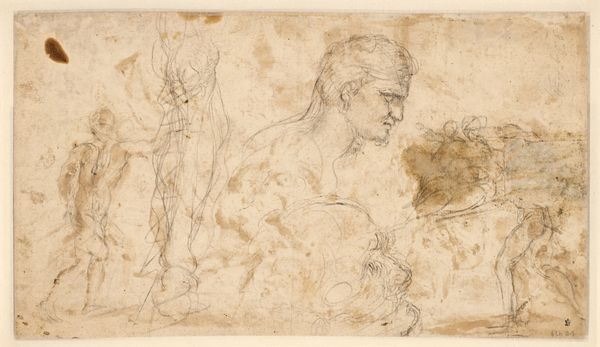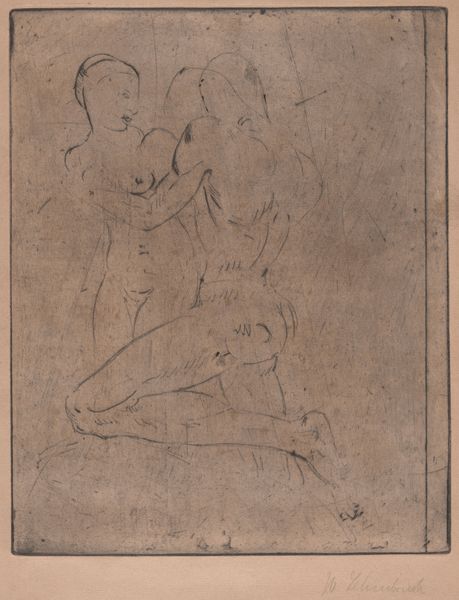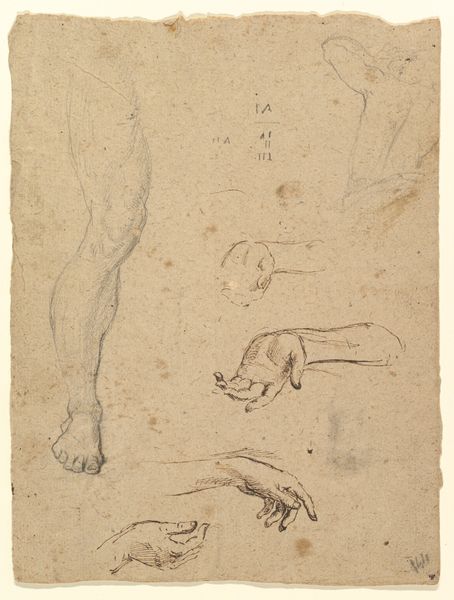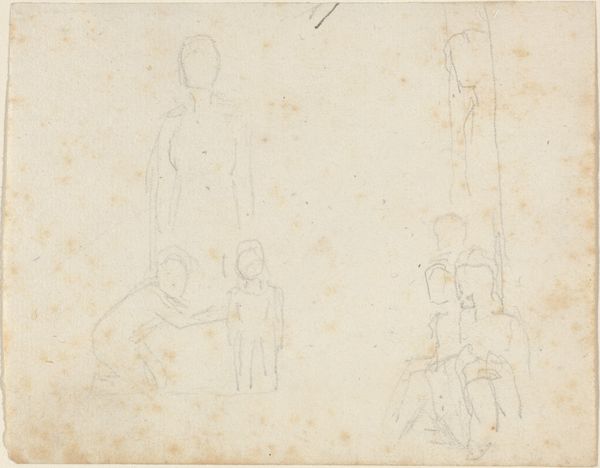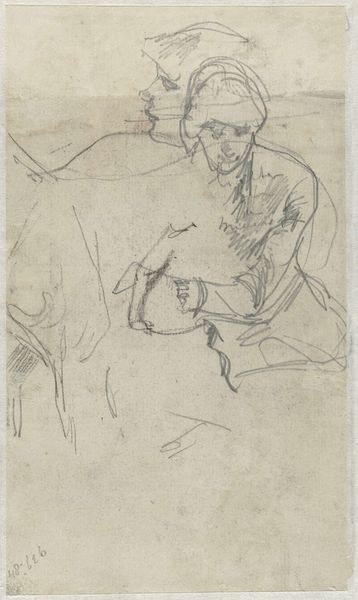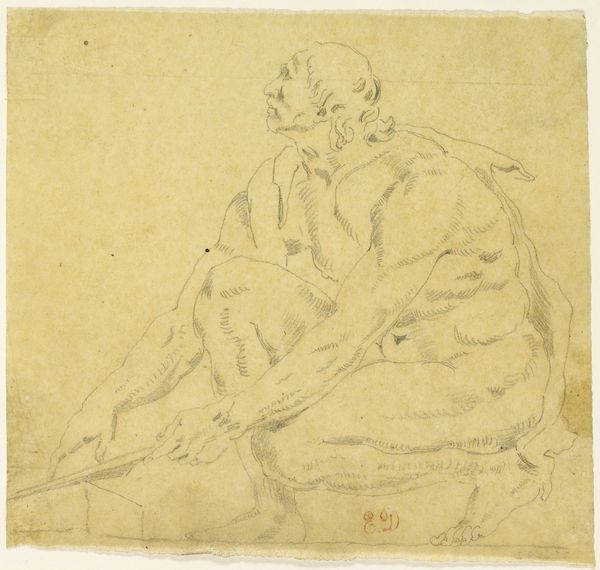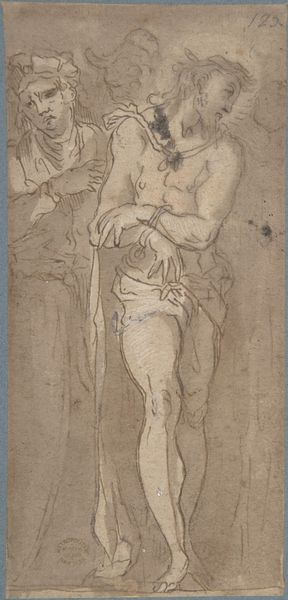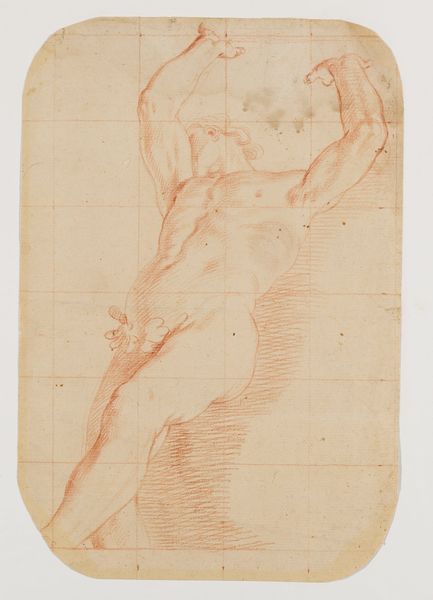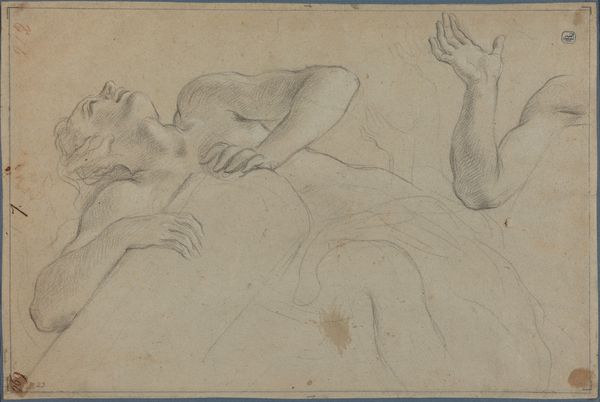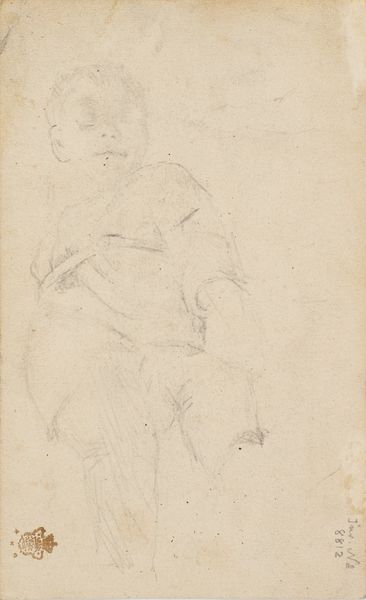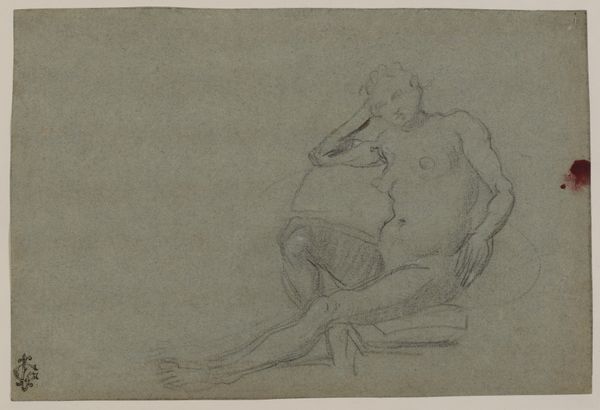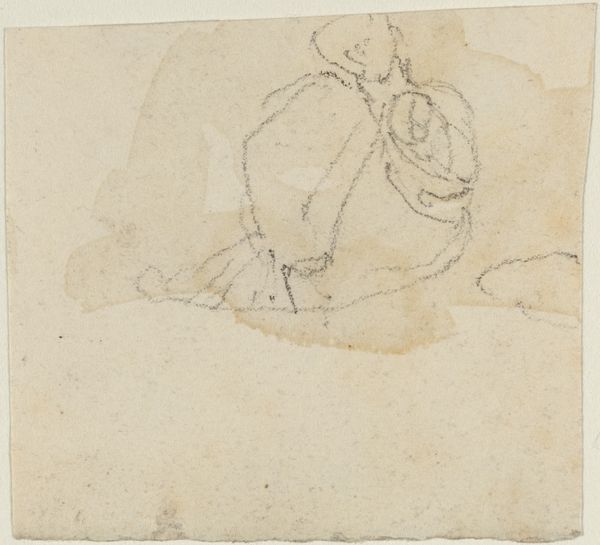
drawing, paper, pencil
#
portrait
#
drawing
#
figuration
#
paper
#
pencil
#
line
Dimensions: overall: 14.8 x 22 cm (5 13/16 x 8 11/16 in.)
Copyright: National Gallery of Art: CC0 1.0
Editor: Observe Pompeo Batoni’s study, “Sketches of Heads and Hands.” Immediately, what stands out is the rather stark contrast between the careful articulation of the hands and face and the more vague, almost ghostly rendering of the rest. Curator: I see it as an engagement with the very problem of representation, and the artistic labor required. We witness a layering, a construction through material means, of various potential forms that only coalesce into something solid within the meticulously drawn features. Editor: It speaks to the economies of the studio, doesn't it? The differential labor involved in completing a study versus producing a finished piece. We can almost see the apprentice hand in the looser sections, or perhaps it represents the artist mulling, testing possibilities. The paper itself shows age; you can almost feel its texture and the history of being handled, considered, worked upon. Curator: And note the strategic placement of the elements; each sketch, whether fully realized or nascent, holds a very deliberate position, relating to the others in a compositional dialogue. Consider the relationship of that beautifully rendered hand at the bottom-left to the soft contour of the face peering out above it. It's a masterclass in balancing positive and negative space, achieved through these fragmentary forms. The artist creates these powerful dynamic relationships. Editor: Agreed. You've drawn my attention to the more gestural strokes; it emphasizes process as labor rather than pure inspiration. Batoni here demonstrates that the making of art requires conscious organization of raw material just as it does inspiration or technique. Curator: These initial marks do show his thinking. The seemingly simple act of drawing, broken down into its essential parts. We see how the artist transforms mundane materials like paper and pencil into expressive vehicles of perception. Editor: Looking at this, one cannot help but appreciate the honest presentation of art as production. It lays bare the stratified, messy labor required for that illusory final “touch” to become reality. Thank you. Curator: Thank you for shedding a fresh light on the materiality and the physical labor that gives these elegant forms such power.
Comments
No comments
Be the first to comment and join the conversation on the ultimate creative platform.

